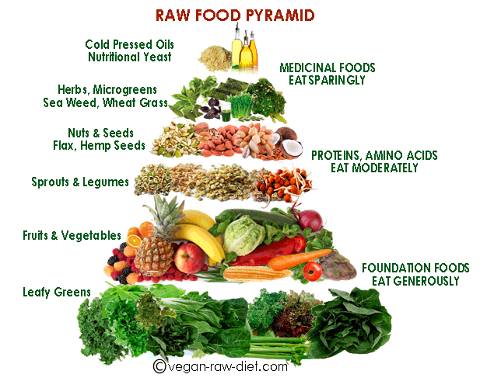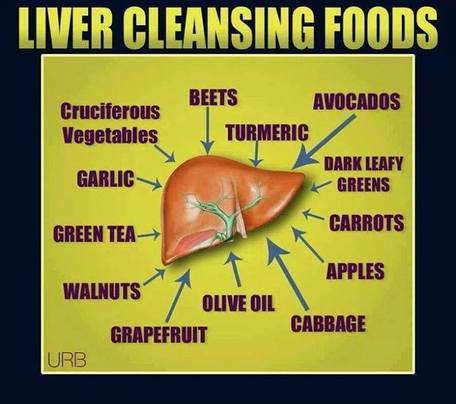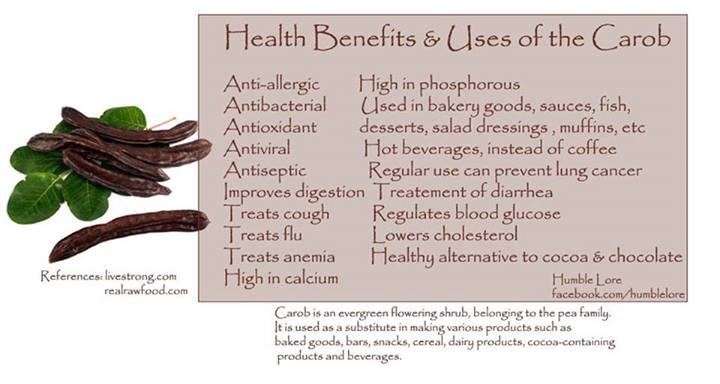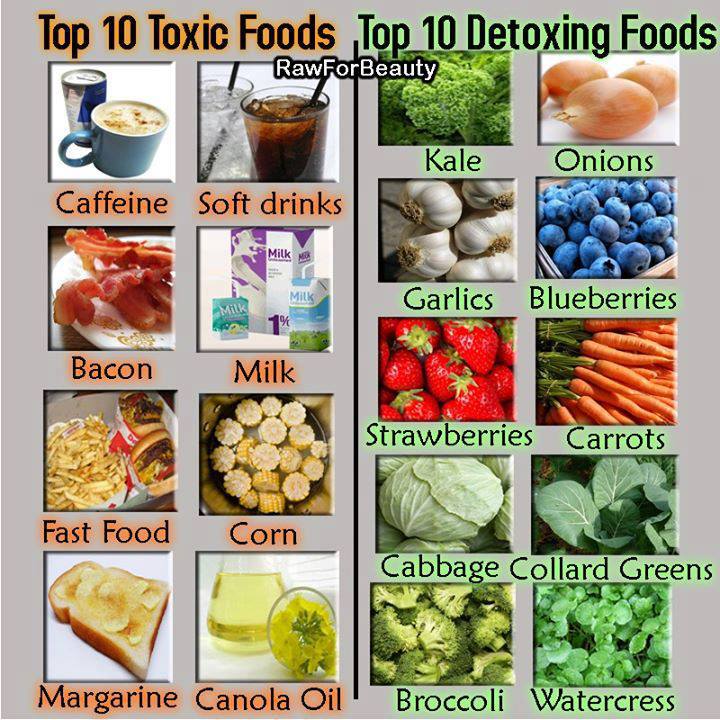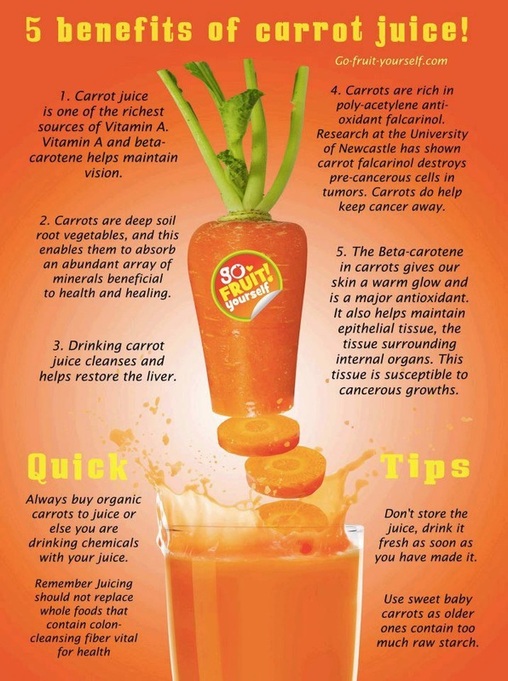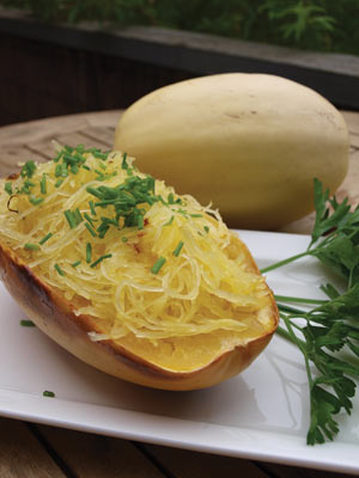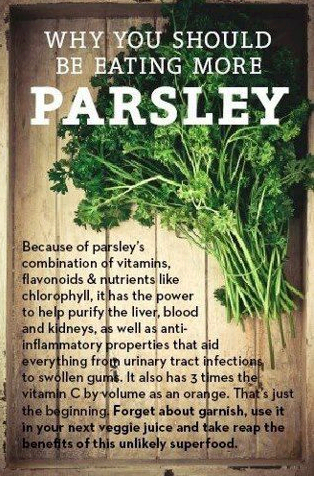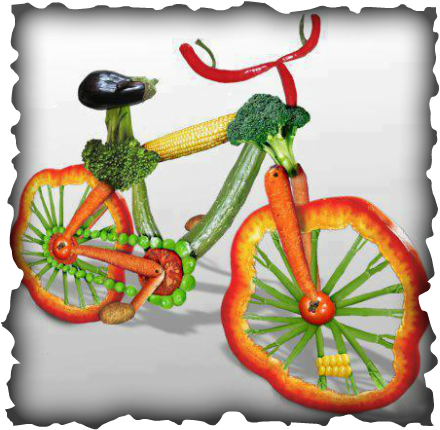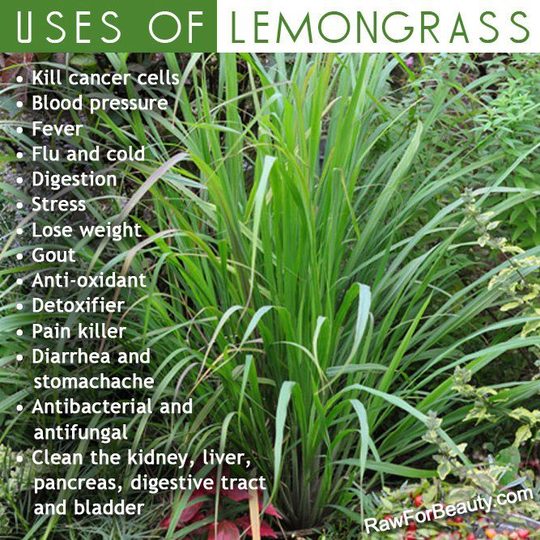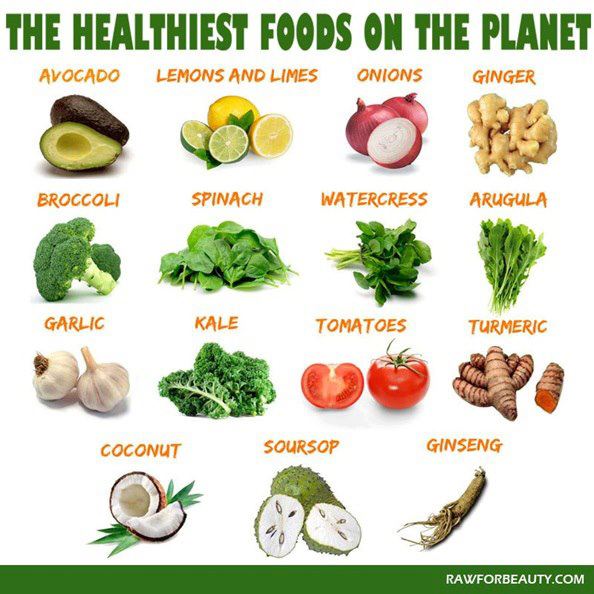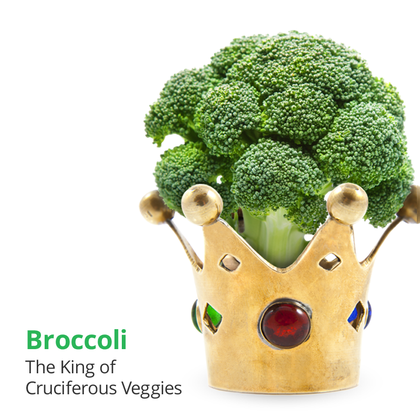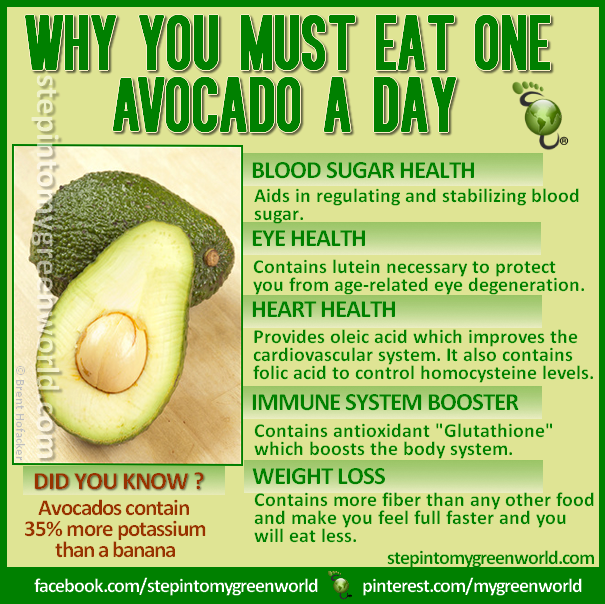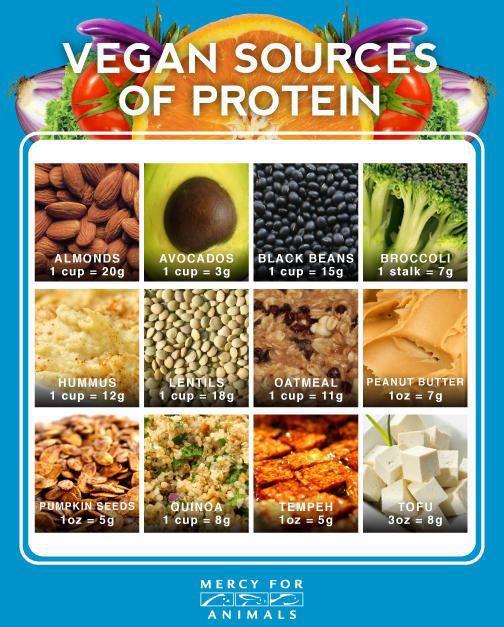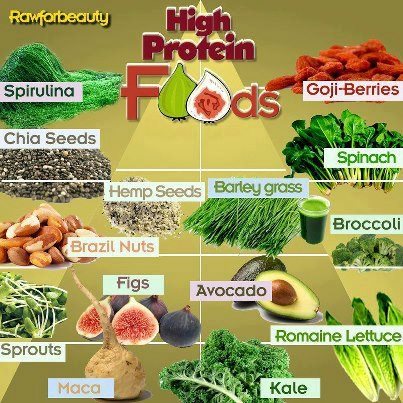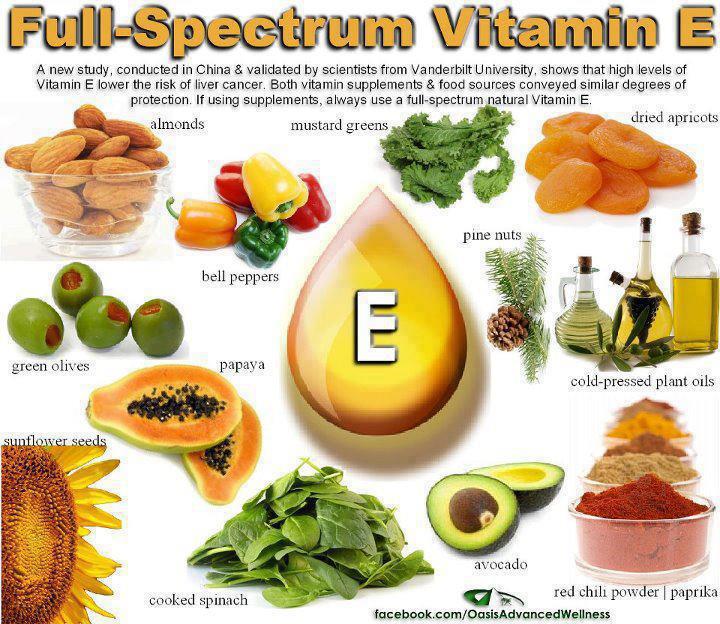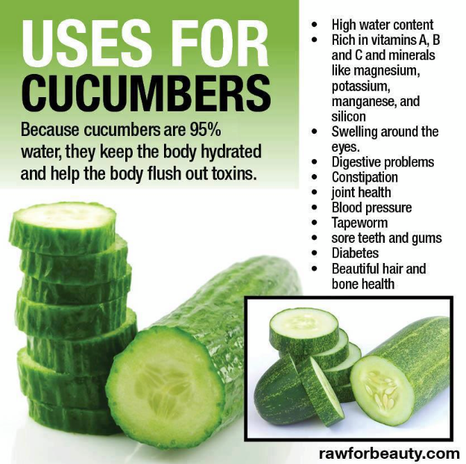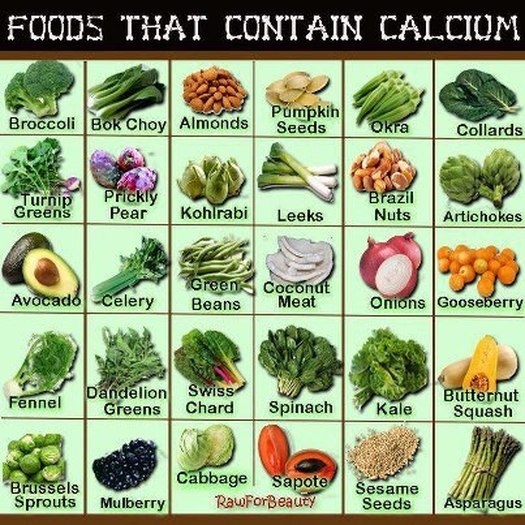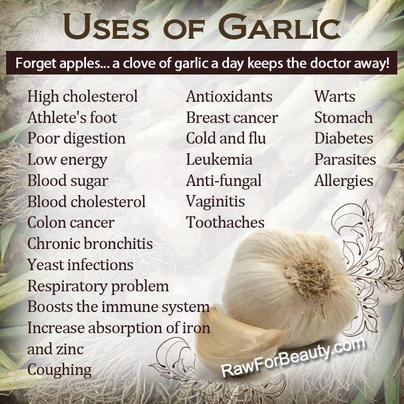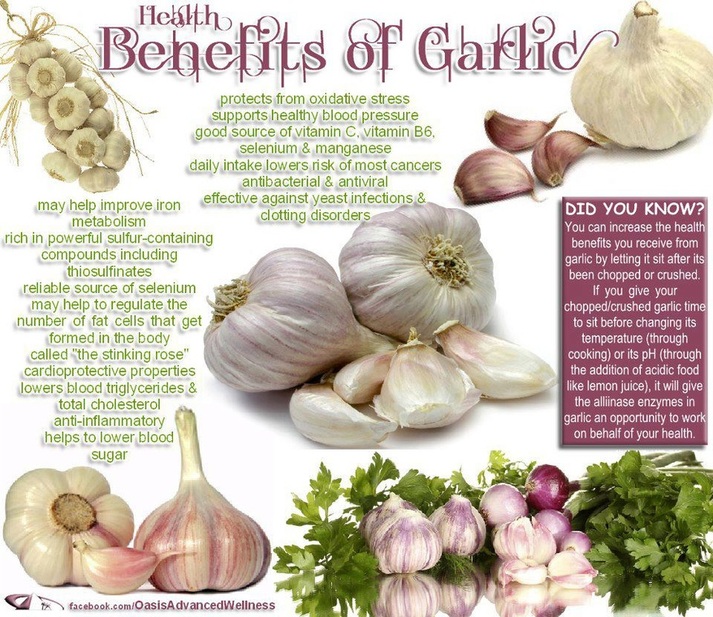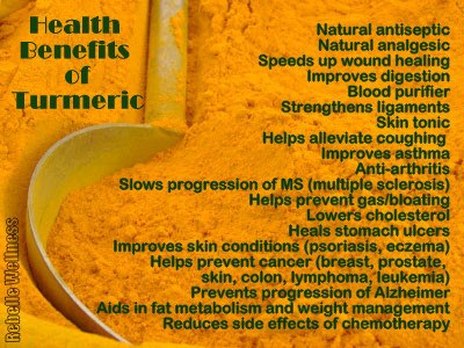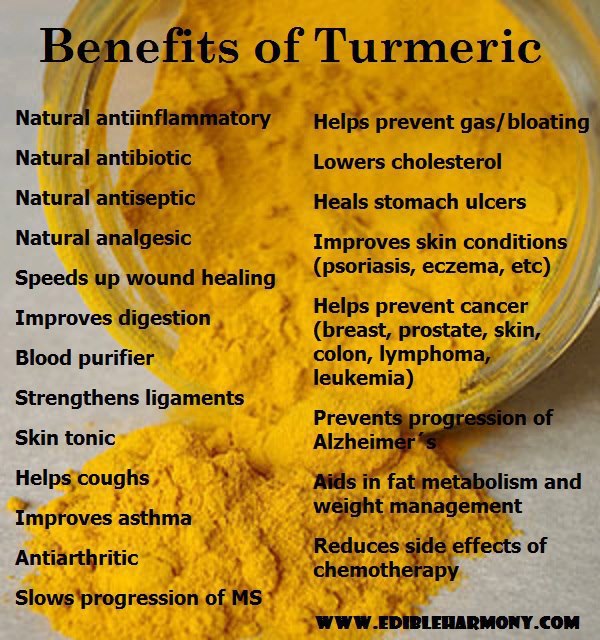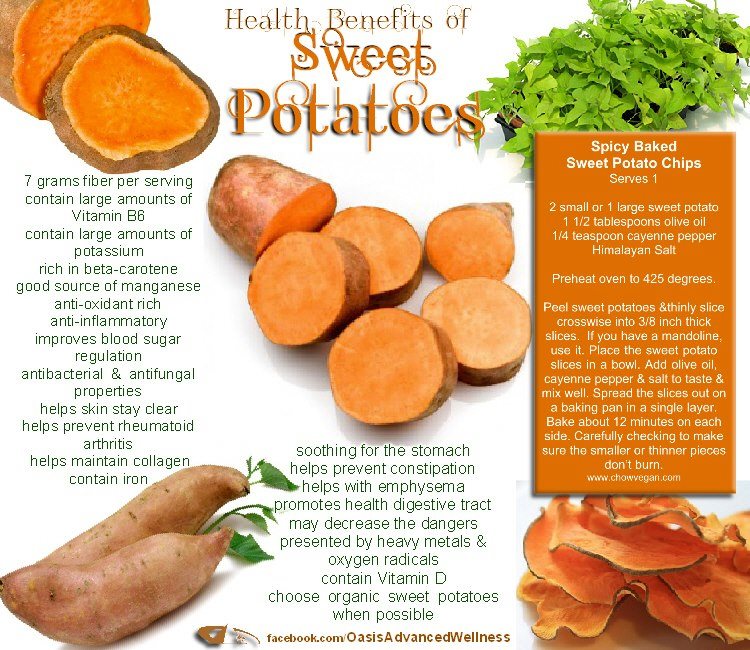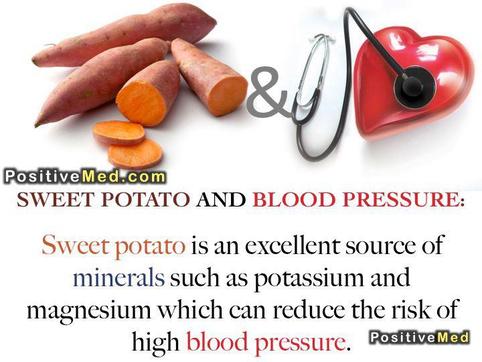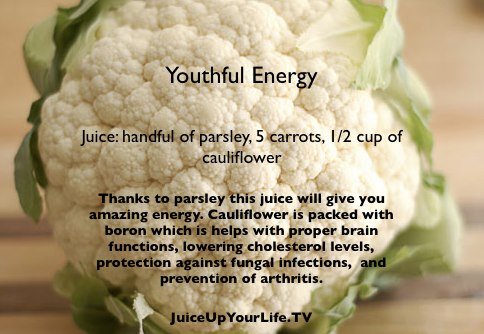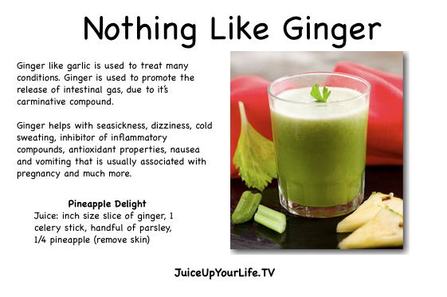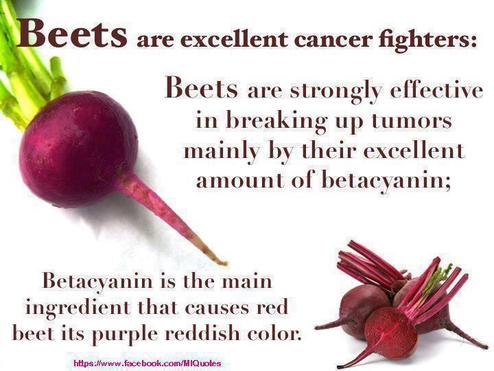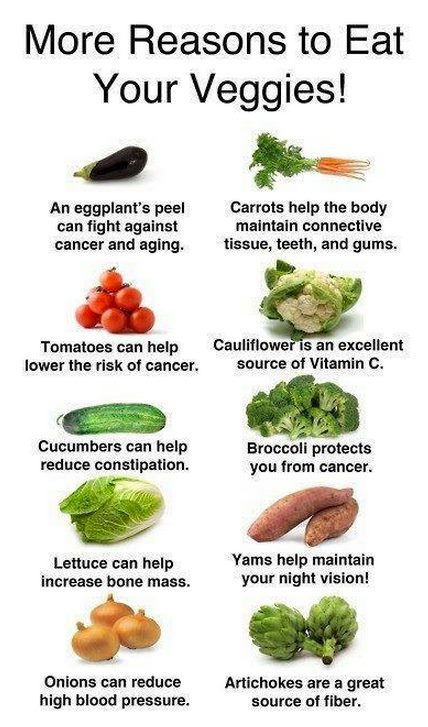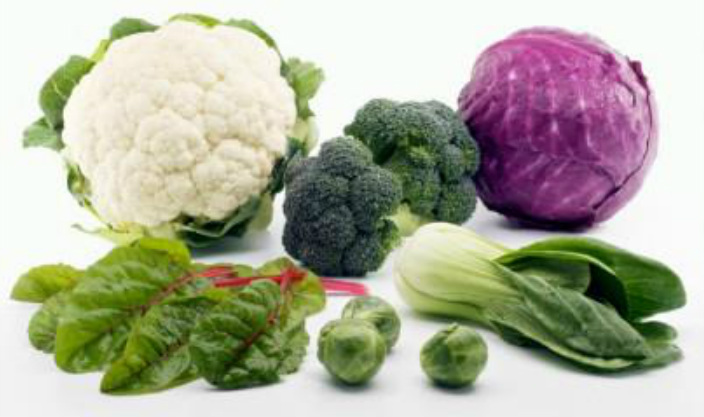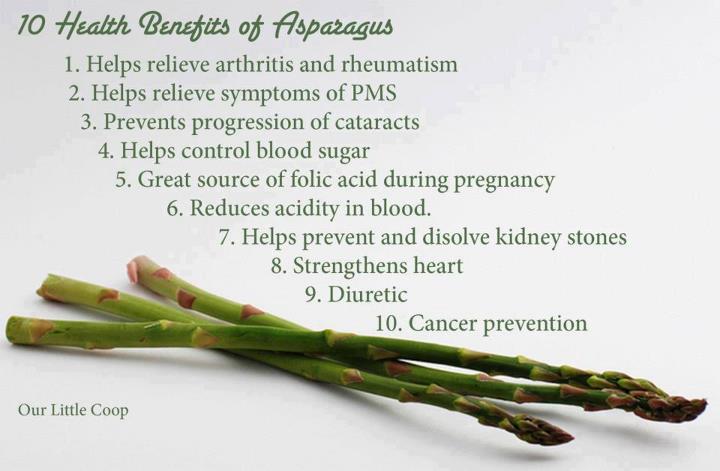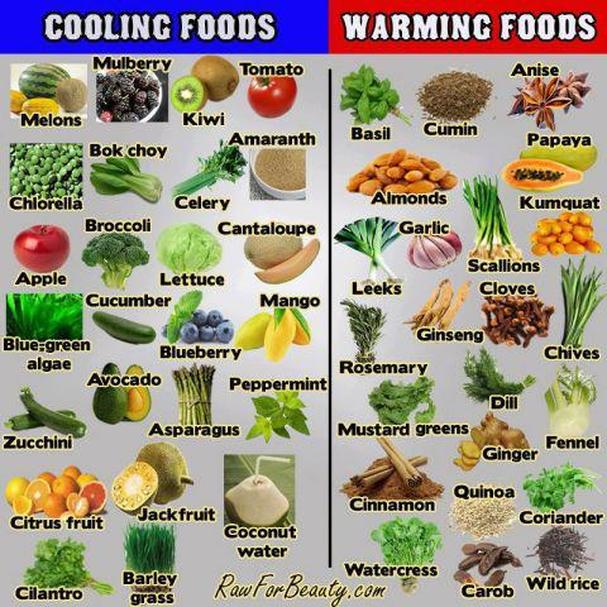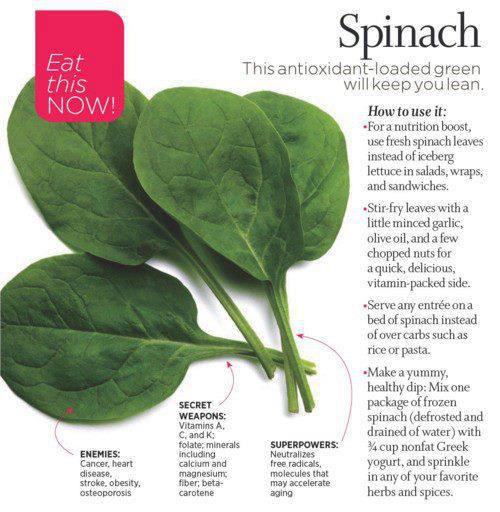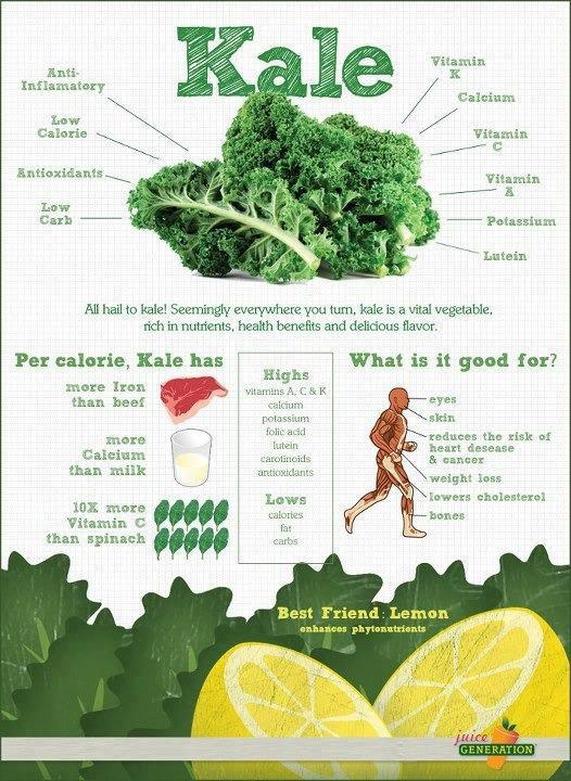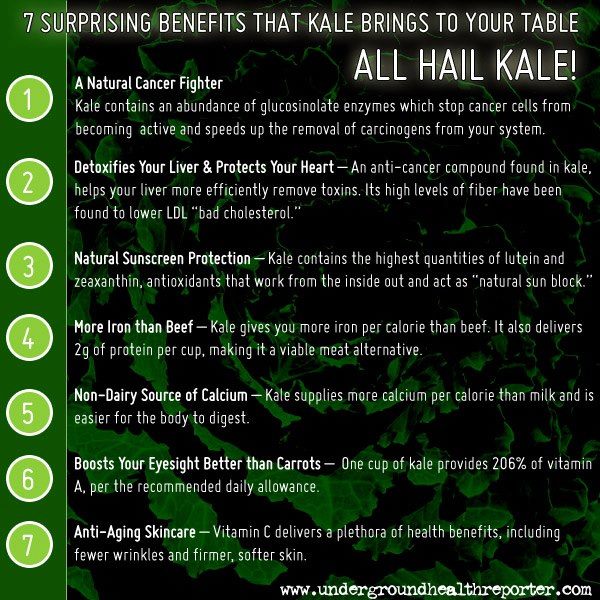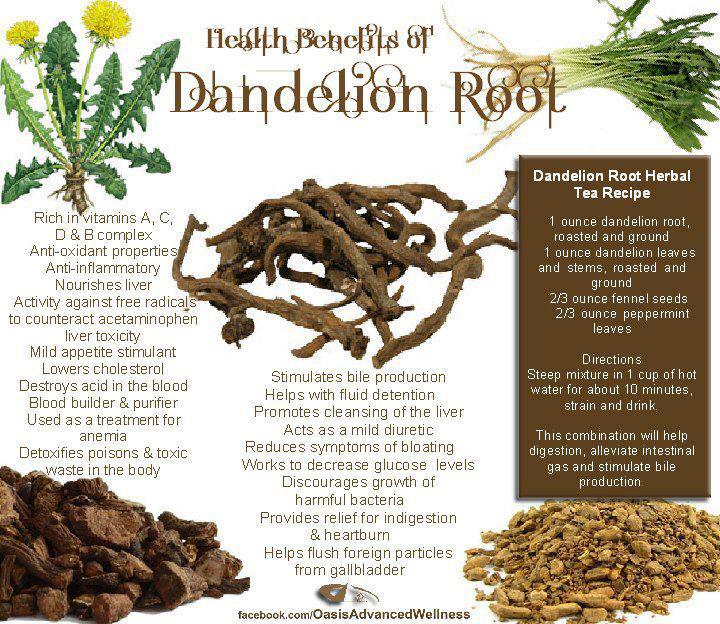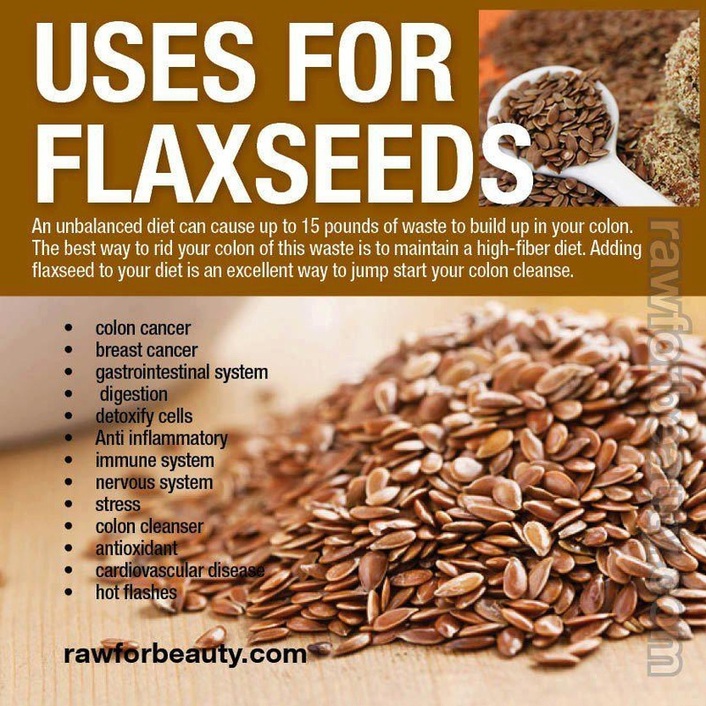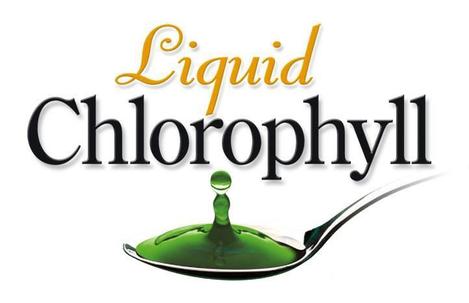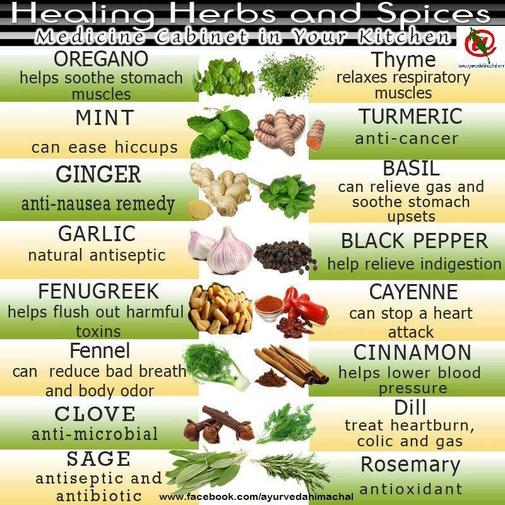Vegies and herbs...
Drs. McDougall, Barnard, Fuhrman and Ornish have been treating type 2 diabetes
with a whole food plant based diet for years with great success.
They've written books on this topic and speak publicly about the benefits of the WFPB diet.
Kaiser Permanente is now supporting the WFPB diet and encouraging their doctors
to discuss it with their patients to treat many ailments including type 2 diabetes.
The bottom line is, if you don’t weigh what you want to weigh,
or if you don’t have all the energy and health you want to have each day
then chances are you’re eating the WRONG foods! - See more at:
7daystoraw.com
Dairy free Protein sources
peanut butter, almonds, beans,
chickpeas, pumpkin seeds/pepitas, sesame, sunflower seeds, chia, quinoa,
cacao, flax/linseed, lentils, hemp, gelatin, maca, mesquite,
spinach, goji berries, figs, brazil nuts, avocado, sprouts, kale, broccoli, cauli,
barley grass, romaine, watercress,
pumpkin, asparagus, peas, sweet potato,
plant/pea/brown rice based protein pdr- and spirulina in capsules.
put beans in soups, make tuna cucumber salad, make oopsie rolls with PB not cheese.
with a whole food plant based diet for years with great success.
They've written books on this topic and speak publicly about the benefits of the WFPB diet.
Kaiser Permanente is now supporting the WFPB diet and encouraging their doctors
to discuss it with their patients to treat many ailments including type 2 diabetes.
The bottom line is, if you don’t weigh what you want to weigh,
or if you don’t have all the energy and health you want to have each day
then chances are you’re eating the WRONG foods! - See more at:
7daystoraw.com
Dairy free Protein sources
peanut butter, almonds, beans,
chickpeas, pumpkin seeds/pepitas, sesame, sunflower seeds, chia, quinoa,
cacao, flax/linseed, lentils, hemp, gelatin, maca, mesquite,
spinach, goji berries, figs, brazil nuts, avocado, sprouts, kale, broccoli, cauli,
barley grass, romaine, watercress,
pumpkin, asparagus, peas, sweet potato,
plant/pea/brown rice based protein pdr- and spirulina in capsules.
put beans in soups, make tuna cucumber salad, make oopsie rolls with PB not cheese.
marksdailyapple.com/difference-between yams-& sweet-potatoes
marksdailyapple.com/Are potatoes-healthy?
marksdailyapple/paleo-potatoes?
marksdailyapple.com/Are potatoes-healthy?
marksdailyapple/paleo-potatoes?
Just Eat Real Food
Where to buy in Australia: "Look for ‘Vegetable Spaghetti’ grown & packed by Milano Brothers.
It is in season in AUTUMN/FALL, so that's April/May down under. Try farmers Markets. Print out a photo of the label to show them. It is available, you might just have to be persistent!In Australia and looking for Spaghetti Squash? resources here:http://on.fb.me/14kdg6K
Spaghetti squash (Cucurbita pepo) (also called vegetable spaghetti, noodle squash, spaghetti marrow, squaghetti, gold string melon (金糸瓜 (kinshi uri) in Japanese) is an oblong seed-bearing variety of winter squash.
The fruit can range either from ivory to yellow or orange in color.
The orange varieties have a higher carotene content. Its center contains many large seeds.
Its flesh is bright yellow or orange. When raw, the flesh is solid and similar to other raw squash;
when cooked, the flesh falls away from the fruit in ribbons or strands like spaghetti.
In Season: Like other hard-shelled winter squash, spaghetti squash is harvested in the early fall.
The squash keeps for months in cool storage, so it is available in markets throughout the winter and spring.
What to Look For:
Mature spaghetti squash is oblong in shape with a creamy-yellow shell.
Choose firm squash that's free of soft spots and feels heavy for its size.
How to Store: Uncut spaghetti squash keeps well in a cool, dry place for up to a month.
How to Use: Spaghetti squash can be baked, boiled, steamed, or microwaved.
It can be served with or without sauce, as a substitute for pasta.
The seeds can be roasted, similar to pumpkin seeds.
Nutrition:
Spaghetti squash contains many nutrients, including folic acid, potassium, vitamin A, and beta carotene.
It is low in calories, averaging 42 calories per 1-cup (155 grams) serving.
Recipe Ideas:
dandydishes./spaghetti-squash-au-gratin
Chicken Coconut Curry Noodle Bowl: on.fb.me
Spaghetti and Meatball Bites: on.fb.me
Spaghetti Squash Carbonara: on.fb.me
Chicken Bacon Alfredo: on.fb.me
Rosemary Spaghetti Squash Egg Nests: on.fb.me
see also: paleomg.com/tag/spaghetti-squash
paleoaustralia.com/paleo-meatball-stew-with-spaghetti-squash
Buy Seeds here:
Withfoodandlove.com/broiled-artichokes-roasted-garlic-aioli-awesome-sauce
Where to buy in Australia: "Look for ‘Vegetable Spaghetti’ grown & packed by Milano Brothers.
It is in season in AUTUMN/FALL, so that's April/May down under. Try farmers Markets. Print out a photo of the label to show them. It is available, you might just have to be persistent!In Australia and looking for Spaghetti Squash? resources here:http://on.fb.me/14kdg6K
Spaghetti squash (Cucurbita pepo) (also called vegetable spaghetti, noodle squash, spaghetti marrow, squaghetti, gold string melon (金糸瓜 (kinshi uri) in Japanese) is an oblong seed-bearing variety of winter squash.
The fruit can range either from ivory to yellow or orange in color.
The orange varieties have a higher carotene content. Its center contains many large seeds.
Its flesh is bright yellow or orange. When raw, the flesh is solid and similar to other raw squash;
when cooked, the flesh falls away from the fruit in ribbons or strands like spaghetti.
In Season: Like other hard-shelled winter squash, spaghetti squash is harvested in the early fall.
The squash keeps for months in cool storage, so it is available in markets throughout the winter and spring.
What to Look For:
Mature spaghetti squash is oblong in shape with a creamy-yellow shell.
Choose firm squash that's free of soft spots and feels heavy for its size.
How to Store: Uncut spaghetti squash keeps well in a cool, dry place for up to a month.
How to Use: Spaghetti squash can be baked, boiled, steamed, or microwaved.
It can be served with or without sauce, as a substitute for pasta.
The seeds can be roasted, similar to pumpkin seeds.
Nutrition:
Spaghetti squash contains many nutrients, including folic acid, potassium, vitamin A, and beta carotene.
It is low in calories, averaging 42 calories per 1-cup (155 grams) serving.
Recipe Ideas:
dandydishes./spaghetti-squash-au-gratin
Chicken Coconut Curry Noodle Bowl: on.fb.me
Spaghetti and Meatball Bites: on.fb.me
Spaghetti Squash Carbonara: on.fb.me
Chicken Bacon Alfredo: on.fb.me
Rosemary Spaghetti Squash Egg Nests: on.fb.me
see also: paleomg.com/tag/spaghetti-squash
paleoaustralia.com/paleo-meatball-stew-with-spaghetti-squash
Buy Seeds here:
Withfoodandlove.com/broiled-artichokes-roasted-garlic-aioli-awesome-sauce
Add it to raw fruit gazpacho, tea, smoothies, juices, casseroles etc.
And boil it with chicken and onion for a tasty lemongrass chicken soup
Use it as an Insect Repellent. Plant lemon grass around the patio
(also dab peppermint oil on your ankles and wrists)
Optimalhealthconsultant.com/natural-remedies-insect-repellant
And boil it with chicken and onion for a tasty lemongrass chicken soup
Use it as an Insect Repellent. Plant lemon grass around the patio
(also dab peppermint oil on your ankles and wrists)
Optimalhealthconsultant.com/natural-remedies-insect-repellant
Top six alkaline foods to eat every day for vibrant health
1. Root vegetables
Due to the healing nature of these foods,
and their tendency to be more rich in minerals than many other vegetables,
it may be safe to say that you can't get enough of them.
Look for radishes (black, red or white), as well as beets, carrots, turnips,
horseradish and rutabaga/sweet potato.
Ready to eat after steaming for just 15-20 minutes,
root vegetables will help you feel both satiated and better grounded.
2. Cruciferous vegetables
These are the veggies we all know and love,
made even more delicious with just a small amount of healthy, homemade sauce like pesto.
Choose from broccoli, cabbage, cauliflower, Brussels sprouts and the like.
Cauliflower Beneifts and Recipes
3. Leafy greens
These include kale, Swiss chard, turnip greens and spinach - of which spinach may in fact be the best pick.
Known especially for its rich vitamin K and folate content, spinach is also packed with vitamins, minerals, phytochemicals, antioxidants and fiber, helping to improve digestion and even vision.
4. Garlic
Realfarmacy.com/how to take-garlic to reduce the odour
A true miracle food, garlic appears at the top of innumerable lists of foods that encourage overall health,
and alkaline-forming food is no exception.
Among its other benefits are its ability to promote cardiovascular
and immune health by lowering blood pressure, cleansing the liver and fighting off disease.
5. Cayenne peppers (capsicum)
As part of a family of potent, tropical peppers which contain enzymes essential to endocrine function,
cayenne is among the most alkalizing foods.
It is known for its antibacterial properties and is a rich supply of vitamin A,
making it a helpful agent in fighting off the harmful free radicals that lead to stress and illness.
6. Lemons
Lemons may be the most alkalizing food of all. As a natural disinfectant,
it can heal wounds while also providing potent and immediate relief for hyperacidity and virus-related conditions,
as well as coughs, colds, flu and heartburn.
Lemon also works to energize the liver and promote detoxification.
Learn more: naturalnews.com_alkaline_foods_improved_health_conscious_eating
1. Root vegetables
Due to the healing nature of these foods,
and their tendency to be more rich in minerals than many other vegetables,
it may be safe to say that you can't get enough of them.
Look for radishes (black, red or white), as well as beets, carrots, turnips,
horseradish and rutabaga/sweet potato.
Ready to eat after steaming for just 15-20 minutes,
root vegetables will help you feel both satiated and better grounded.
2. Cruciferous vegetables
These are the veggies we all know and love,
made even more delicious with just a small amount of healthy, homemade sauce like pesto.
Choose from broccoli, cabbage, cauliflower, Brussels sprouts and the like.
Cauliflower Beneifts and Recipes
3. Leafy greens
These include kale, Swiss chard, turnip greens and spinach - of which spinach may in fact be the best pick.
Known especially for its rich vitamin K and folate content, spinach is also packed with vitamins, minerals, phytochemicals, antioxidants and fiber, helping to improve digestion and even vision.
4. Garlic
Realfarmacy.com/how to take-garlic to reduce the odour
A true miracle food, garlic appears at the top of innumerable lists of foods that encourage overall health,
and alkaline-forming food is no exception.
Among its other benefits are its ability to promote cardiovascular
and immune health by lowering blood pressure, cleansing the liver and fighting off disease.
5. Cayenne peppers (capsicum)
As part of a family of potent, tropical peppers which contain enzymes essential to endocrine function,
cayenne is among the most alkalizing foods.
It is known for its antibacterial properties and is a rich supply of vitamin A,
making it a helpful agent in fighting off the harmful free radicals that lead to stress and illness.
6. Lemons
Lemons may be the most alkalizing food of all. As a natural disinfectant,
it can heal wounds while also providing potent and immediate relief for hyperacidity and virus-related conditions,
as well as coughs, colds, flu and heartburn.
Lemon also works to energize the liver and promote detoxification.
Learn more: naturalnews.com_alkaline_foods_improved_health_conscious_eating
6 ways Swiss chard will boost your health
1. Swiss chard contains 13 different polyphenol antioxidants.
2. Chard is a source of a phytonutrient called betalains, which are found in the veins and stem of Swiss chard. Betalains have an antiodixant, anti-inflammatory and detoxifying effect on the body.
3. Swiss chard contains a high amount of fiber and protein, both of which help stabilize blood sugar levels.
4. Swiss chard is high in Vitamin K - according to whfoods.com, there's six to eight times the recommended daily amount in just one cup of boiled chard. This vitamin helps you maintain strong and healthy bones.
5. It contains a high amount of Vitamin C, giving your immune system a boost with each and every bite.
6. High in Vitamin A, Swiss chard will help keep your eyesight in tip top shape.
Read more: http://bit.ly/UvVHbq
1. Swiss chard contains 13 different polyphenol antioxidants.
2. Chard is a source of a phytonutrient called betalains, which are found in the veins and stem of Swiss chard. Betalains have an antiodixant, anti-inflammatory and detoxifying effect on the body.
3. Swiss chard contains a high amount of fiber and protein, both of which help stabilize blood sugar levels.
4. Swiss chard is high in Vitamin K - according to whfoods.com, there's six to eight times the recommended daily amount in just one cup of boiled chard. This vitamin helps you maintain strong and healthy bones.
5. It contains a high amount of Vitamin C, giving your immune system a boost with each and every bite.
6. High in Vitamin A, Swiss chard will help keep your eyesight in tip top shape.
Read more: http://bit.ly/UvVHbq
Did you know…that you can keep your blood sugar level in check with a “cucumber” secret?
Have you heard of the tiny little cucumber called the coccinia cordifolia. Also called kundru …baby watermelon…little gourd…gentleman’s toes…and most commonly, ivy gourd—this vegetable has been prized in India for centuries. Now, this curative wonder is gaining the attention it deserves from Western researchers for its ability to keep your blood sugar level in check.
undergroundhealthreporter.com/blood-sugar-level
Healthy Blender Recipes
Besides Green Smoothies, Green Juices, Green Soups, Green Salads, there's other green supplements.
Parsley, celery, Ormus SuperGreens, Wheatgrass, Barley grass, Spirulina, Chlorella etc
Are you including TURMERIC in your diet?
Turmeric contains magical anti-inflammatory and antioxidant agents, as well as having natural antibiotic, antiseptic, and analgesic properties. It can improve digestion, help purify blood,
lower cholesterol, heal stomach ulcers, prevent gas and bloating, assist in fat metabolism,
help with acne, psoriasis, arthritis. It is just INCREDIBLE.
Add it to chicken, meat, veg, juices, smoothies, curries, vegetables, soups, etc.
A shot with some coconut water like Young and Raw is a GREAT WAY to get it in.
Turmeric contains magical anti-inflammatory and antioxidant agents, as well as having natural antibiotic, antiseptic, and analgesic properties. It can improve digestion, help purify blood,
lower cholesterol, heal stomach ulcers, prevent gas and bloating, assist in fat metabolism,
help with acne, psoriasis, arthritis. It is just INCREDIBLE.
Add it to chicken, meat, veg, juices, smoothies, curries, vegetables, soups, etc.
A shot with some coconut water like Young and Raw is a GREAT WAY to get it in.
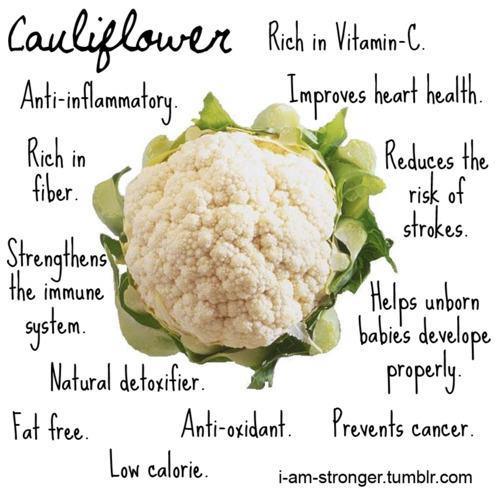
Cauliflower. rich in nutrients, imakes a FABULOUS base for many dishes, make cauliflower millet mash, use cauliflower as the base for vegan Mac N Cheese, use it as a base for Coconut Curry Soup, use it in my Vegan Mayo that goes into my potato salad, my Cream of Cauliflower Soup, crumb and fry it, mash and add cnut cream, use it for pizza base,
Roasted with curry powder, then smothered with "cheese" sauce ie
1. Easy Cheesy Cauliflower (dairy-free!)2. The Secret To Perfect Cauliflower Pizza Crust « Detoxinista
3.Grate it raw to make Cauliflower "tabouli".
4. Make sushi 'rice" and dehydrated cauliflower "popcorn".
5. Roasted in the oven with seasonings, ghee/dripping/ccnut oil, then dip in tahini/garlic
Healthy Blender Recipes
BEET JUICE - the natural answer to wrinkles. Has anybody tried this? I know beets are great for liver detoxification. Beets also contain high quantities of betaine, a powerful antioxidant responsible for the deep ruby colour, which flushes the liver, reduces homocysteine levels which in turn reduces cardiovascular disease risk, helps mental functioning, balances moods, improves mental acuity and can even be used in the treatment of AIDS and alcohol addiction. It optimizes the utilization of oxygen by the red blood cells and lymph activity. It is also reportedly used for the treatment of gallstones, gout and jaundice and serves as a valuable elixir for anemia and bladder and kidney disorders. It contains many minerals such as calcium, potassium, iron, copper, and sodium and several acids such as folic, oxalic and fumaric. Beet juice has a fairly earthy, sweet, pungent, taste, which some people like better than others. It is delicious mixed with other sweet flavors and balanced with some ginger or lemon. It is best to start slow with beets, about a half of a medium beet until the body is accustomed to it, because it is such a powerful cleanser in can really clear out the body. I LOVE beets!
BEET JUICE - the natural answer to wrinkles. Has anybody tried this? I know beets are great for liver detoxification. Beets also contain high quantities of betaine, a powerful antioxidant responsible for the deep ruby colour, which flushes the liver, reduces homocysteine levels which in turn reduces cardiovascular disease risk, helps mental functioning, balances moods, improves mental acuity and can even be used in the treatment of AIDS and alcohol addiction. It optimizes the utilization of oxygen by the red blood cells and lymph activity. It is also reportedly used for the treatment of gallstones, gout and jaundice and serves as a valuable elixir for anemia and bladder and kidney disorders. It contains many minerals such as calcium, potassium, iron, copper, and sodium and several acids such as folic, oxalic and fumaric. Beet juice has a fairly earthy, sweet, pungent, taste, which some people like better than others. It is delicious mixed with other sweet flavors and balanced with some ginger or lemon. It is best to start slow with beets, about a half of a medium beet until the body is accustomed to it, because it is such a powerful cleanser in can really clear out the body. I LOVE beets!
|
CARROTS
Carrot can offer prevention against different ailments. containsingrich vitamin and mineral contents, besides other valuable nutrients. Considering the effectiveness of carrot, doctors and health experts have declared it “apple” for the people having meager resources, the News reported. Dr. Mian Iftikhar, a Medical Specialist, said that carrot especially its juice... READ FULL ARTICLE HERE -fitlife.tv/carrot-juice-what-are-the-benefits |
Thehealthyhomeeconomist.com/Think-all raw-veg-are-best-think-again
"Cruciferous vegetables should be cooked before eating as they contain chemicals
that BLOCK the production of thyroid hormone in your body!
Considering that 2 out of every 3 Westerners are either overweight or obese
and this is projected to jump to 75% by 2020, this is of particular importance
as folks struggling with weight usually suffer from borderline to full blown hypothyroidism.
Hypothyroidism is a condition where the thyroid gland does not make enough thyroid hormone,
so someone suffering from this condition surely does not want to be eating foods that will block
what little thyroid hormone is being produced in the first place!
Symptoms of hypothyroidism include cold hands and feet, thinning hair, fatigue,
reduced or nonexistent libido, coarse dry hair, constipation, difficulty losing weight,
and depression among many others.
Cooking crucifers reduces the goitrogenic substances by about 2/3.
Fermentation does not reduce goitrogens in these veggies, but since fermented crucifers such as sauerkraut are typically eaten as a condiment and, hence, in small amounts, consumption is fine if the diet is rich in iodine.
Here is the list of common cruciferous vegetables that you do not want to be eating raw
if you want to protect your thyroid gland!
Arugula, broccoli, kale, cauliflower, cabbage, turnip, collard greens, bok choy,
brussels sprouts, radish, rutabaga, and watercress."
"Cruciferous vegetables should be cooked before eating as they contain chemicals
that BLOCK the production of thyroid hormone in your body!
Considering that 2 out of every 3 Westerners are either overweight or obese
and this is projected to jump to 75% by 2020, this is of particular importance
as folks struggling with weight usually suffer from borderline to full blown hypothyroidism.
Hypothyroidism is a condition where the thyroid gland does not make enough thyroid hormone,
so someone suffering from this condition surely does not want to be eating foods that will block
what little thyroid hormone is being produced in the first place!
Symptoms of hypothyroidism include cold hands and feet, thinning hair, fatigue,
reduced or nonexistent libido, coarse dry hair, constipation, difficulty losing weight,
and depression among many others.
Cooking crucifers reduces the goitrogenic substances by about 2/3.
Fermentation does not reduce goitrogens in these veggies, but since fermented crucifers such as sauerkraut are typically eaten as a condiment and, hence, in small amounts, consumption is fine if the diet is rich in iodine.
Here is the list of common cruciferous vegetables that you do not want to be eating raw
if you want to protect your thyroid gland!
Arugula, broccoli, kale, cauliflower, cabbage, turnip, collard greens, bok choy,
brussels sprouts, radish, rutabaga, and watercress."
If possible purchase organic/spray free green leaf veg
fitlife.tv/7-benefits-of-kale1. Beta-Carotene
Beta-carotene is an antioxidant which helps to build the body’s immune system.
An antioxidant helps neutralize free radicals and helps prevent molecules from oxidizing.
One cup of cooked kale has about 5.8 mg of beta-carotene (Barone et. al, 2002).
Beat-carotene is also important because it’s a precursor for the production of vitamin A.
When we get adequate amounts of vitamin A, we have healthier skin, a stronger immune system,
and it helps with vision as well.
2. Calcium
According to Organicauthority.com, kale contains more calcium per calorie than milk (90 grams per serving)
and is also easier to absorb. Calcium is important in preventing osteoporosis, preventing boss loss,
and helps maintain a healthy metabolism. Remember to get enough vitamin D,
since it helps with the absorption of calcium.
3. Chlorophyll
Chlorophyll is a type of pigment that provides kale it’s deep green color.
There are many benefits of chlorophyll. Chlorophyll aids in gastrointestinal problems,
promotes the formation of hemoglobin and red blood cells,
has anti-oxidative and anti-inflammatory effects, and it also helps with bad breath.
Chlorophyll also aids in absorbing the odor of garlic. So many people don’t like juicing garlic
because of the smell and after odor, if you wrap parsley or kale around a garlic clove and then feed it into the juicer,
the chlorophyll actually absorbs the odor of the garlic. Chlorophyll is a great detoxifier as well,
so add kale and other dark leafy greens to your juice.
4. Folate
Kale contains folate which is an important B vitamin. Folate also prevents certain birth defects
and is important for normal brain development of unborn babies.
Folate is has anticancer properties and is important in maintaining a healthy heart.
5. Isothiocyanates
Ever wonder why kale and other greens have a pungent taste? Well they contain a compound
called isothiocyanate. This compound helps in preventing hormone based cancers
and inhibit cancerous elements from in smoke.
6. Lutein & ZeaxanthinThese carotenoids are helpful in preventing macular degeneration.
Macular degeneration is the number one cause of blindness in the elderly.
7. Vitamin K
Vitamin k is important in bone building and has anti-clotting abilities.
Due to it’s anti-clotting abilities, vitamin K may interfere with certain medications,
thus check with your doctor if kale is right for you!
Add it to your juice, sautée with coconut oil (benefits of coconut oil - click here),
and salt to make kale chips, steam it or just eat it raw!
Check out kale juice recipe.
fitlife.tv/7-benefits-of-kale
Beta-carotene is an antioxidant which helps to build the body’s immune system.
An antioxidant helps neutralize free radicals and helps prevent molecules from oxidizing.
One cup of cooked kale has about 5.8 mg of beta-carotene (Barone et. al, 2002).
Beat-carotene is also important because it’s a precursor for the production of vitamin A.
When we get adequate amounts of vitamin A, we have healthier skin, a stronger immune system,
and it helps with vision as well.
2. Calcium
According to Organicauthority.com, kale contains more calcium per calorie than milk (90 grams per serving)
and is also easier to absorb. Calcium is important in preventing osteoporosis, preventing boss loss,
and helps maintain a healthy metabolism. Remember to get enough vitamin D,
since it helps with the absorption of calcium.
3. Chlorophyll
Chlorophyll is a type of pigment that provides kale it’s deep green color.
There are many benefits of chlorophyll. Chlorophyll aids in gastrointestinal problems,
promotes the formation of hemoglobin and red blood cells,
has anti-oxidative and anti-inflammatory effects, and it also helps with bad breath.
Chlorophyll also aids in absorbing the odor of garlic. So many people don’t like juicing garlic
because of the smell and after odor, if you wrap parsley or kale around a garlic clove and then feed it into the juicer,
the chlorophyll actually absorbs the odor of the garlic. Chlorophyll is a great detoxifier as well,
so add kale and other dark leafy greens to your juice.
4. Folate
Kale contains folate which is an important B vitamin. Folate also prevents certain birth defects
and is important for normal brain development of unborn babies.
Folate is has anticancer properties and is important in maintaining a healthy heart.
5. Isothiocyanates
Ever wonder why kale and other greens have a pungent taste? Well they contain a compound
called isothiocyanate. This compound helps in preventing hormone based cancers
and inhibit cancerous elements from in smoke.
6. Lutein & ZeaxanthinThese carotenoids are helpful in preventing macular degeneration.
Macular degeneration is the number one cause of blindness in the elderly.
7. Vitamin K
Vitamin k is important in bone building and has anti-clotting abilities.
Due to it’s anti-clotting abilities, vitamin K may interfere with certain medications,
thus check with your doctor if kale is right for you!
Add it to your juice, sautée with coconut oil (benefits of coconut oil - click here),
and salt to make kale chips, steam it or just eat it raw!
Check out kale juice recipe.
fitlife.tv/7-benefits-of-kale
Use dandelion tea, its nice.
How awesome is dandelion!
This 'weed' is quite versatile, with all parts of the plant containing medicinal qualities.
eg to use as juice and teas to help cleanse the liver.
Most plants that we consider 'weeds' help to heal and repair us - and,
along side roadways and highways, or areas that we've cleared and bulldozed.
Instead of continuously attacking these plants, further disrupting the eco-system with toxic chemicals,
maybe we can shift our perspective and see the benefit that these plants carry.
Laura Dawn
Sacred Source Nutrition
How awesome is dandelion!
This 'weed' is quite versatile, with all parts of the plant containing medicinal qualities.
eg to use as juice and teas to help cleanse the liver.
Most plants that we consider 'weeds' help to heal and repair us - and,
along side roadways and highways, or areas that we've cleared and bulldozed.
Instead of continuously attacking these plants, further disrupting the eco-system with toxic chemicals,
maybe we can shift our perspective and see the benefit that these plants carry.
Laura Dawn
Sacred Source Nutrition
Healthy Blender Recipes
Are you including FLAXSEEDS in your diet?
Consuming raw ground flaxseeds (which makes them more available to the body)
is one the best things you can do for your health.
Raw flax meal is a fantastic source of essential omega fatty acids 3, 6 and 9, fibre,
and a good source of most of the B Vitamins, magnesium and manganese.
They also contain powerful phytochemicals andantioxidants.
They are also one the richest sources of lignans that convert to substances
that help balance female hormone levels in the body. Studies have shown this to prevent breast cancer,
reduce menopausal symptoms, and increase fertility.
Flaxseed oils are very unstable and should never be heated.
Always store in a glass air-tight container in the fridge
and try to purchase as fresh as possible from a health food store with a high turnover.
Look for stores that keep the flaxseeds, flax meal and oil in the fridge.
Purchase whole flaxseeds, which have a longer shelf life, and grind at home. eg with a spice or coffee grinder.
You need to grind flaxseeds in order to make the nutrients available and easily absorbed.
Otherwise, they just pass through the body under-utilized.
Flaxseed oil is touted as a wonderful nutritional supplement and does have enormous health benefits.
However, it does not contain the phytochemicals or fibre of the whole seeds.
Flaxseeds are incredibly useful in plant based cooking.
They are a great way to enrich smoothies, puddings, pies and desserts.
They also make a fantastic egg-free binding agent in slices, bars, cakes, cookies, muffins, and breads.
You can also just sprinkle the flax meal over fruit, yoghurt, ice cream, vegetarian stir-fries, soups,
salads, stews and casseroles.
It is also one of the principle ingredients in LSA which I use in everything!
You will notice if I use flaxseeds in recipes, I will add it separately at the very end.
This is because the soluble fibre in flaxseeds causes liquids to thicken
and if left sitting will alter the consistency of a batter or mixture.
Stir it through or fold it in as close to baking as possible.
What's YOUR favourite way to get your daily dose of flax?
Are you including FLAXSEEDS in your diet?
Consuming raw ground flaxseeds (which makes them more available to the body)
is one the best things you can do for your health.
Raw flax meal is a fantastic source of essential omega fatty acids 3, 6 and 9, fibre,
and a good source of most of the B Vitamins, magnesium and manganese.
They also contain powerful phytochemicals andantioxidants.
They are also one the richest sources of lignans that convert to substances
that help balance female hormone levels in the body. Studies have shown this to prevent breast cancer,
reduce menopausal symptoms, and increase fertility.
Flaxseed oils are very unstable and should never be heated.
Always store in a glass air-tight container in the fridge
and try to purchase as fresh as possible from a health food store with a high turnover.
Look for stores that keep the flaxseeds, flax meal and oil in the fridge.
Purchase whole flaxseeds, which have a longer shelf life, and grind at home. eg with a spice or coffee grinder.
You need to grind flaxseeds in order to make the nutrients available and easily absorbed.
Otherwise, they just pass through the body under-utilized.
Flaxseed oil is touted as a wonderful nutritional supplement and does have enormous health benefits.
However, it does not contain the phytochemicals or fibre of the whole seeds.
Flaxseeds are incredibly useful in plant based cooking.
They are a great way to enrich smoothies, puddings, pies and desserts.
They also make a fantastic egg-free binding agent in slices, bars, cakes, cookies, muffins, and breads.
You can also just sprinkle the flax meal over fruit, yoghurt, ice cream, vegetarian stir-fries, soups,
salads, stews and casseroles.
It is also one of the principle ingredients in LSA which I use in everything!
You will notice if I use flaxseeds in recipes, I will add it separately at the very end.
This is because the soluble fibre in flaxseeds causes liquids to thicken
and if left sitting will alter the consistency of a batter or mixture.
Stir it through or fold it in as close to baking as possible.
What's YOUR favourite way to get your daily dose of flax?
Liquid chlorophyll can be purchased at health food stores or online.
Chlorophyll is one of the best blood builders! It has almost the same molecular structure as hemoglobin.
Our blood is approx 75% hemoglobin, which, means this helps to rebuild, replenish, and increase the quality of our red blood cells, increases oxygen utilization in the body, boosting our energy and increasing our wellbeing.
Chlorophyll helps regenerate our bodies on a molecular and cellular level, and helps cleanse the body,
fight infection, and boost the circulatory, digestive, immune, and detoxification systems.
Chlorophyll is highly alkaline, and has antioxidant and antiseptic powers, anti-inflammatory qualities,
and helps to remove heavy metals from the body.
NOTE: Just like stevia, there are a lot of impure brands of liquid chlorophyll on the market.
World Organics or Now Foods are good. If you don't like the taste, try the natural mint flavoured liquid chlorophyll.
It tastes like mint tea. YUM!
You can add liquid chlorophyll to water, to boost smoothies, puddings, ice cream
Chlorophyll is one of the best blood builders! It has almost the same molecular structure as hemoglobin.
Our blood is approx 75% hemoglobin, which, means this helps to rebuild, replenish, and increase the quality of our red blood cells, increases oxygen utilization in the body, boosting our energy and increasing our wellbeing.
Chlorophyll helps regenerate our bodies on a molecular and cellular level, and helps cleanse the body,
fight infection, and boost the circulatory, digestive, immune, and detoxification systems.
Chlorophyll is highly alkaline, and has antioxidant and antiseptic powers, anti-inflammatory qualities,
and helps to remove heavy metals from the body.
NOTE: Just like stevia, there are a lot of impure brands of liquid chlorophyll on the market.
World Organics or Now Foods are good. If you don't like the taste, try the natural mint flavoured liquid chlorophyll.
It tastes like mint tea. YUM!
You can add liquid chlorophyll to water, to boost smoothies, puddings, ice cream
